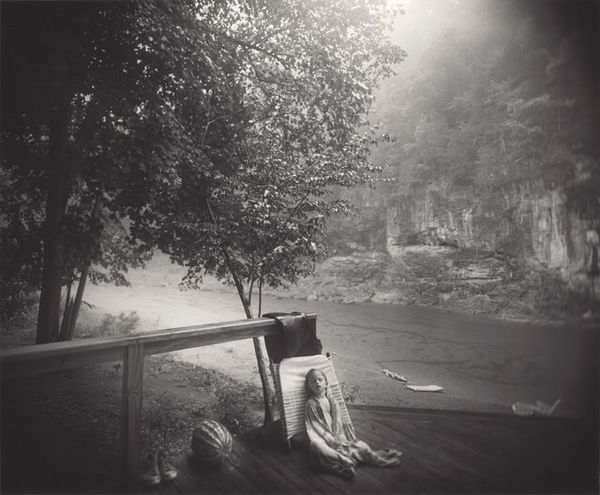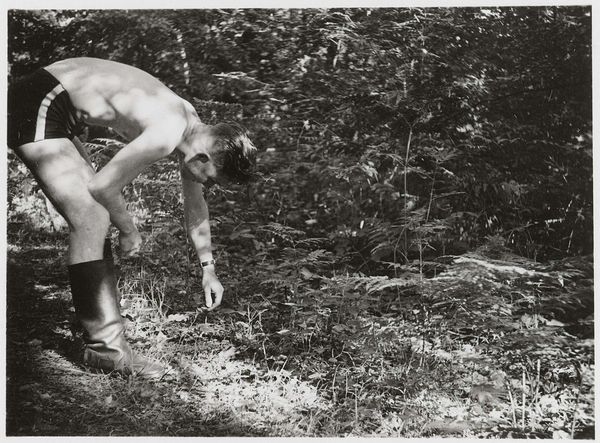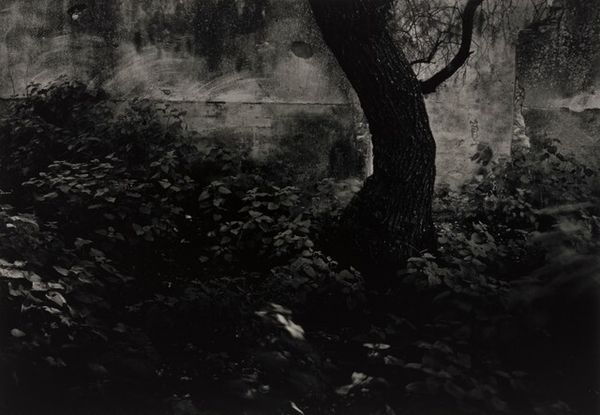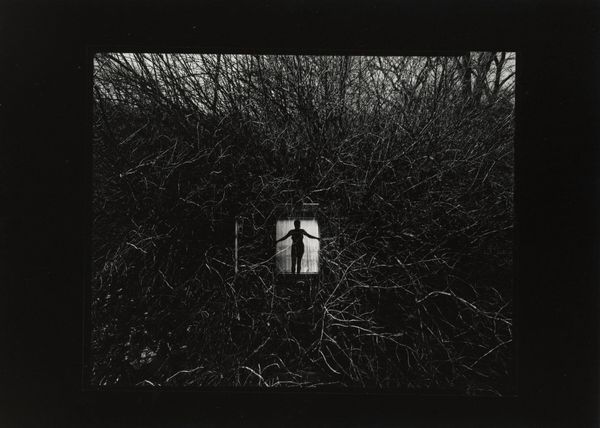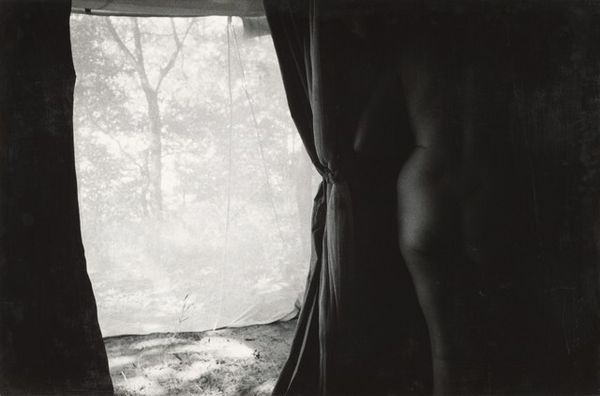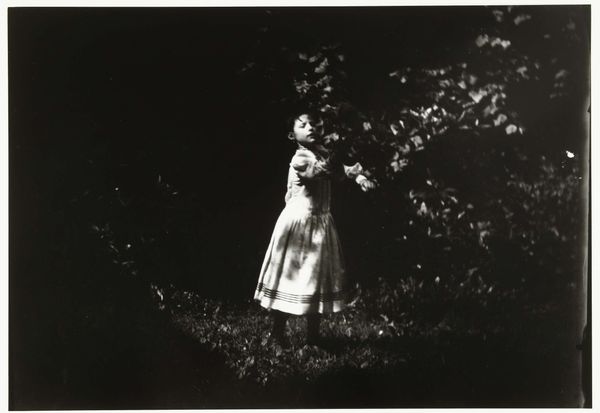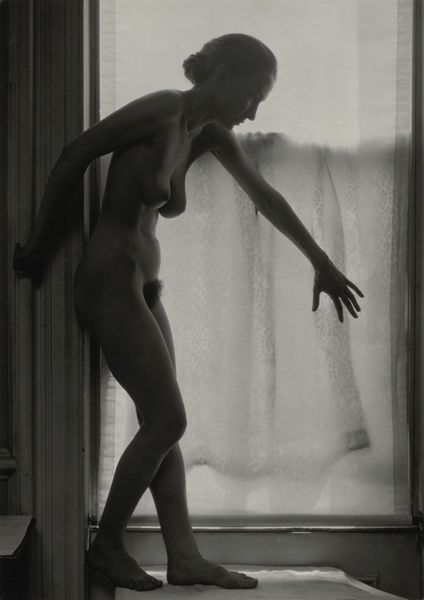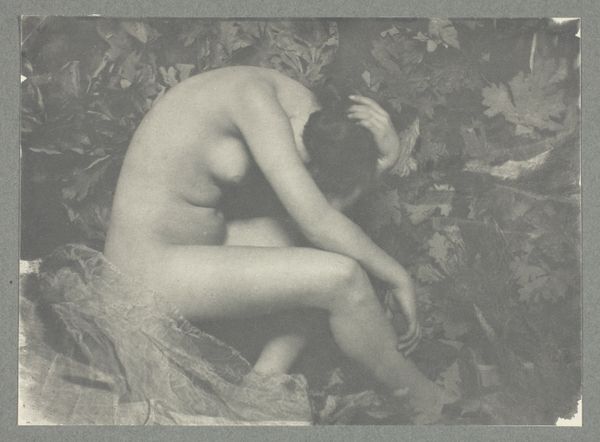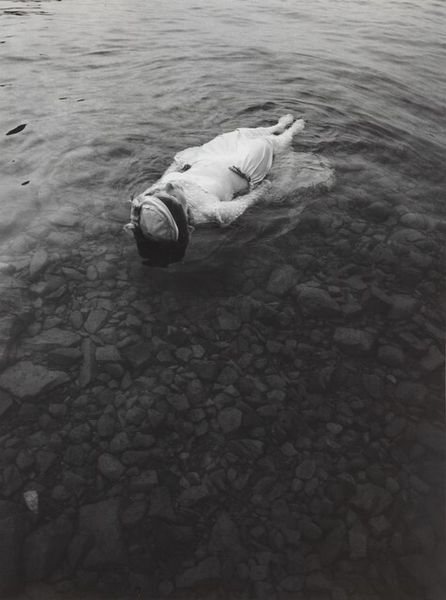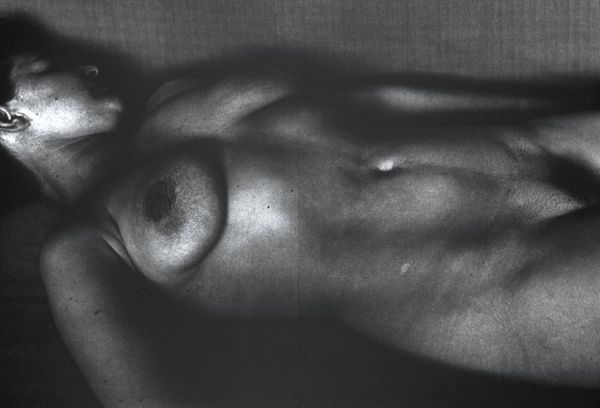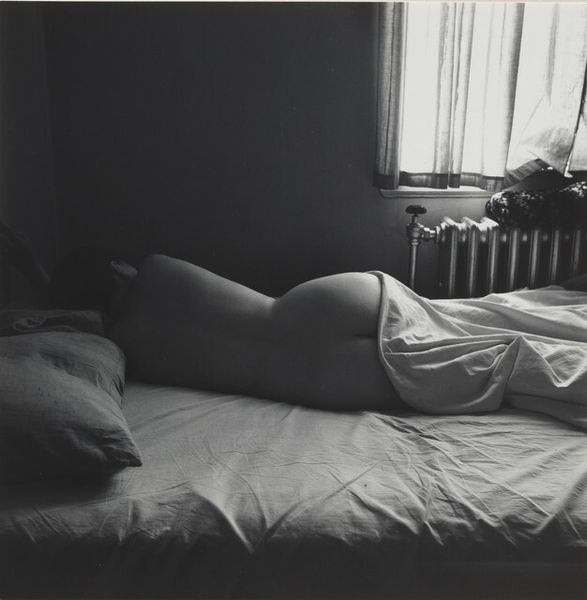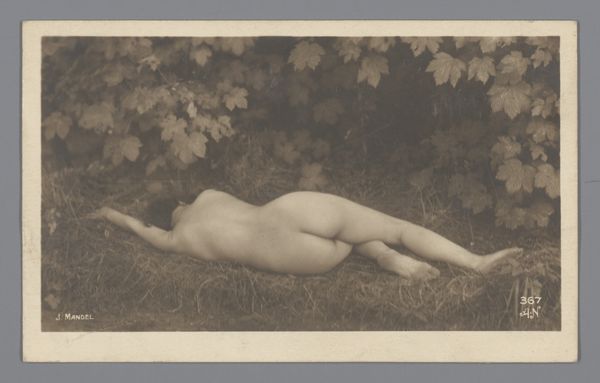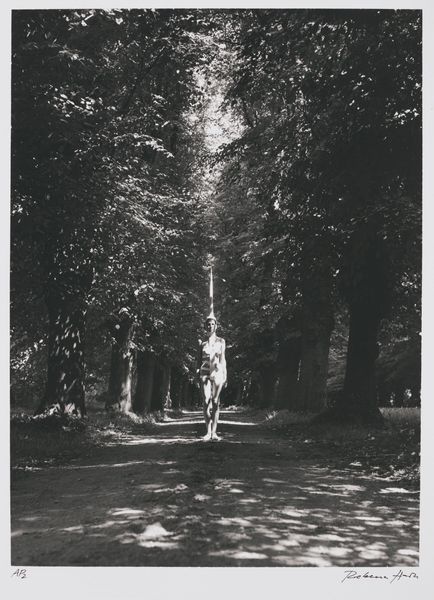
Dimensions: image: 17.78 × 17.78 cm (7 × 7 in.) sheet: 25.4 × 20.32 cm (10 × 8 in.)
Copyright: National Gallery of Art: CC0 1.0
Curator: This gelatin silver print, taken by Harry Callahan in 1954, is titled "Eleanor, Port Huron." It shows a nude figure lying on a blanket, surrounded by a lush, almost overwhelming landscape. Editor: The immediate impact is one of contrast. The smooth, vulnerable form against the dense, almost chaotic, wilderness. It’s quite arresting, but also peaceful somehow. Curator: It's interesting how Callahan positions Eleanor. The landscape isn't just a backdrop; it feels like a character in its own right, pressing in on the figure. It speaks to ideas of nature, and man’s place within it. Editor: Absolutely. Nudity here isn’t simply about sexuality, it’s a vulnerability. It places the individual firmly *within* the landscape, making her a part of something much larger. This has very strong symbolic weight harking back to art from past ages. The tradition is not being discarded but re-presented for this modern age. Curator: Consider too the cultural context of the 1950s. Post-war America was obsessed with ideas of domesticity, but also deeply repressed. Callahan frequently photographed his wife, Eleanor, in both intimate domestic settings and like this in open landscapes. This work subverts the restrictive social roles of women that permeated that time. This could be interpreted as a type of liberty. Editor: Precisely. The blanket acts almost as an altar here. There's a clear reverence not just for nature, but also for the woman herself. We are meant to acknowledge her humanity and her place. This is echoed through artistic history. Curator: What do you think Callahan wanted to convey about humanity and nature in the 1950s? Was he intentionally commenting on nature as untamed and in opposition to human influence? Editor: The picture conveys a feeling of balance, I believe. The naked form implies trust, peace, an effortless part of the wild world rather than an antithetical idea, or struggle between the two. It's a dialogue not a war. Curator: This has opened up new thoughts for me, about how women and art, especially nude subjects, function to invite new understandings about freedom from societal oppression and expectations. Editor: It has given me pause, the way a timeless archetype, the nude in nature, persists, continually finding new articulation across time periods and personal contexts, constantly being reborn with added relevance and emotional import.
Comments
No comments
Be the first to comment and join the conversation on the ultimate creative platform.
